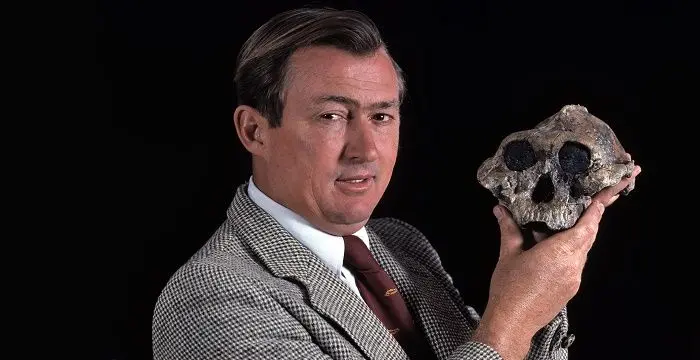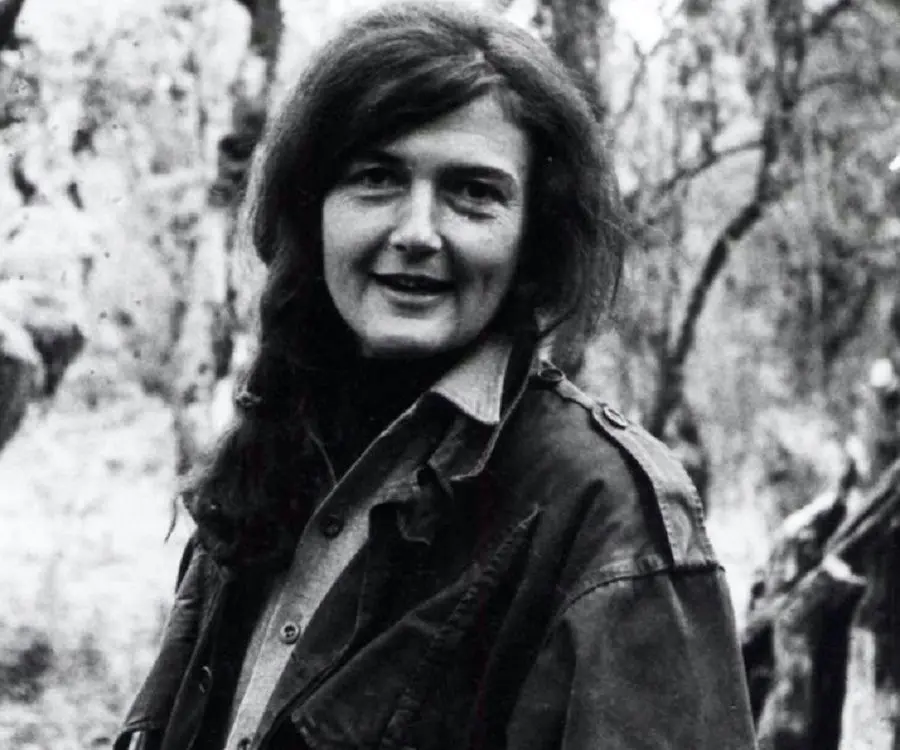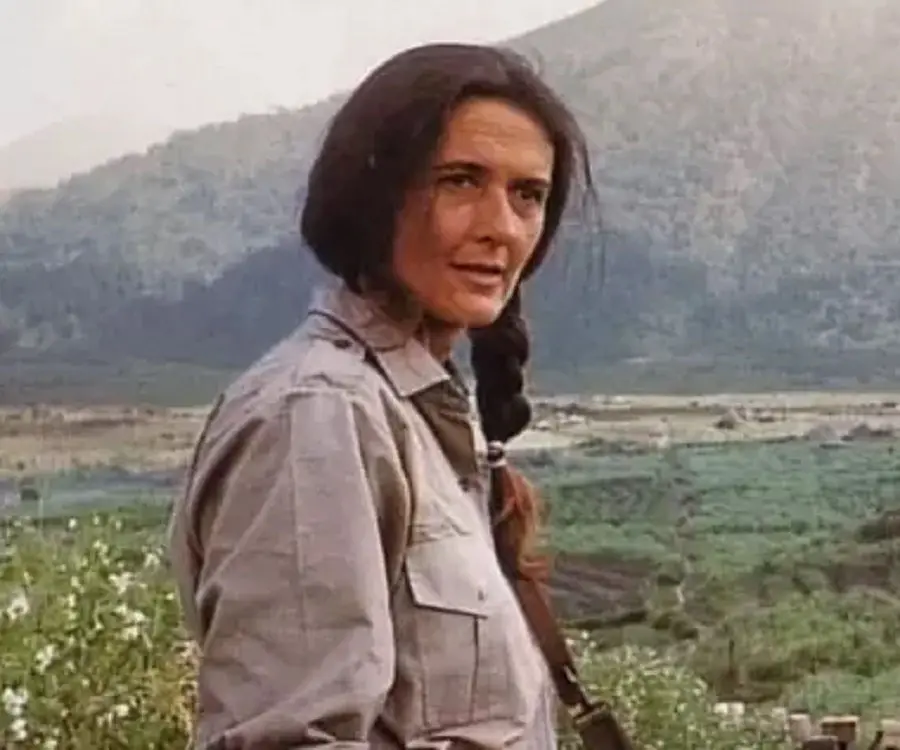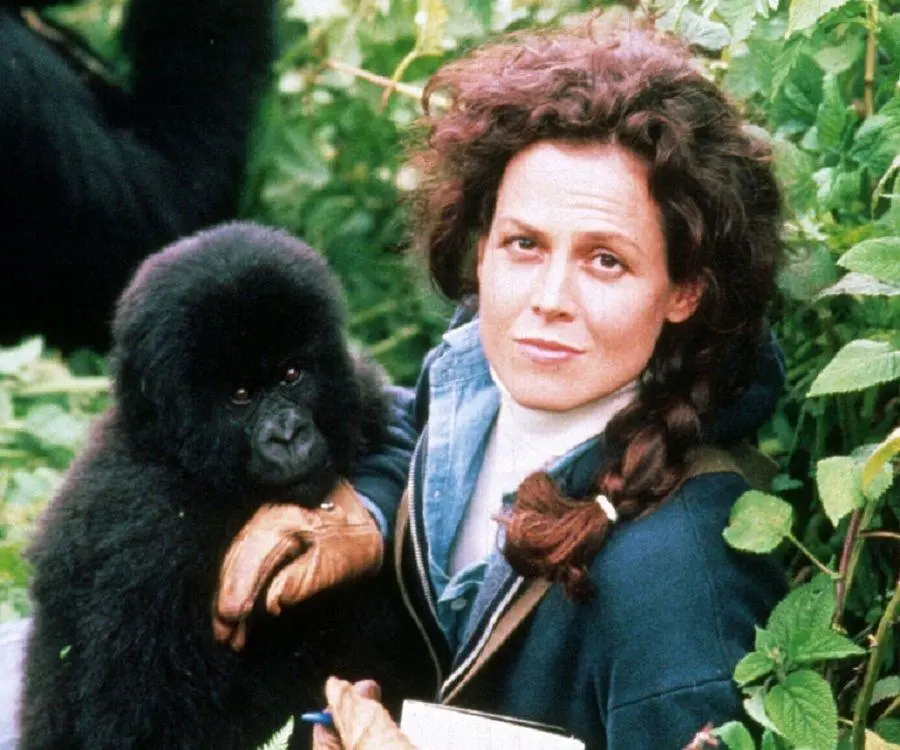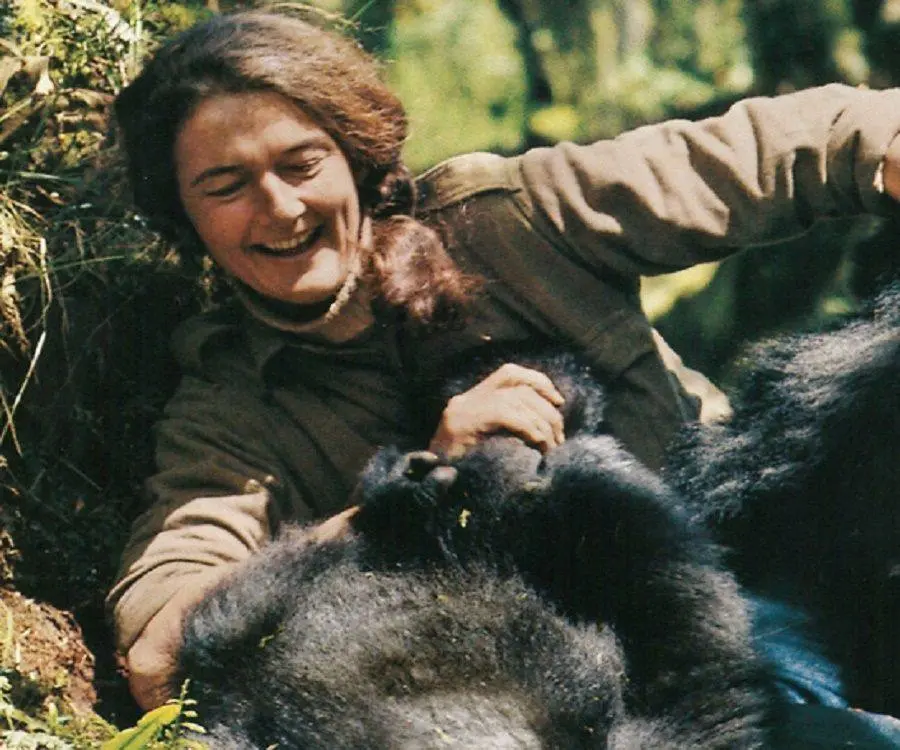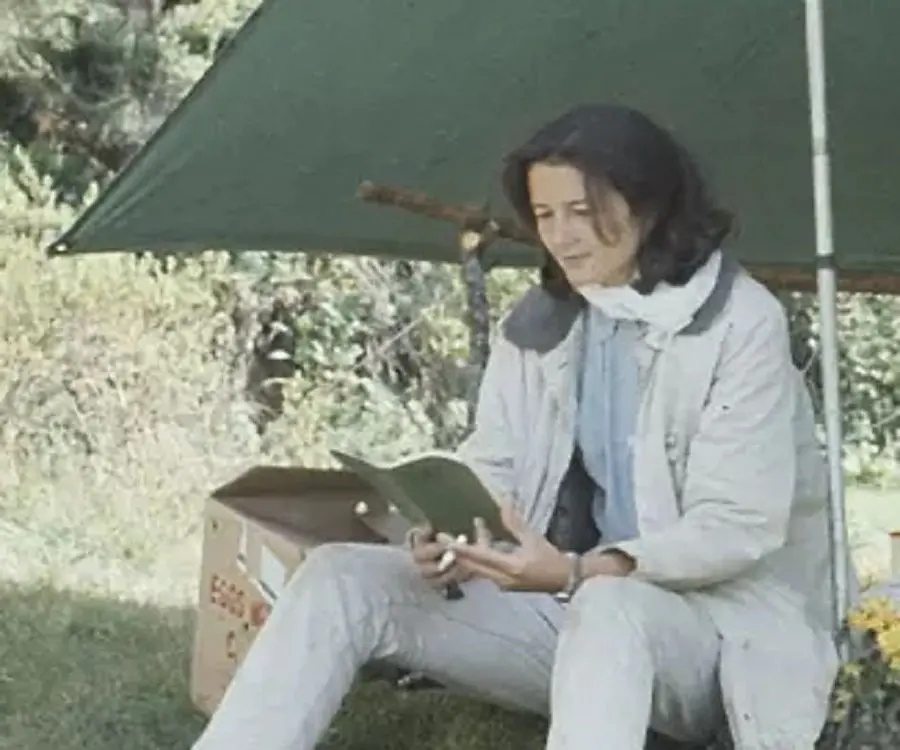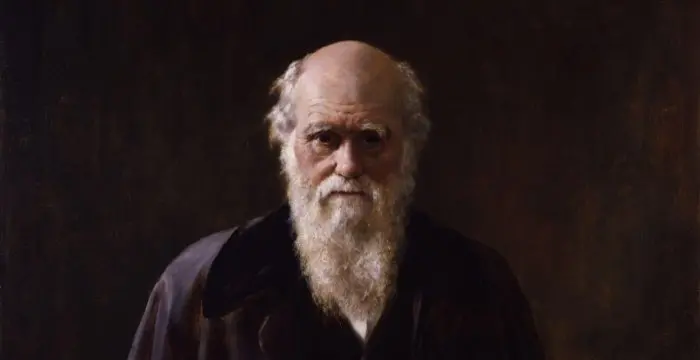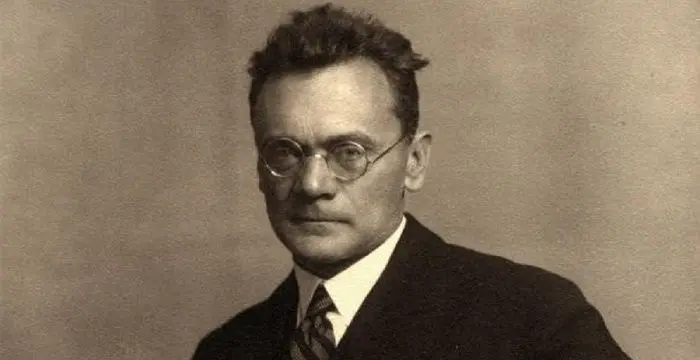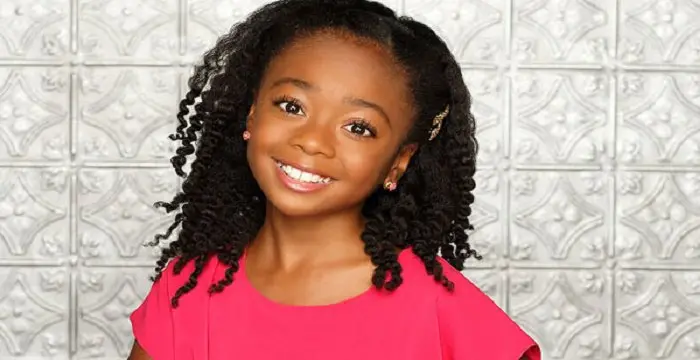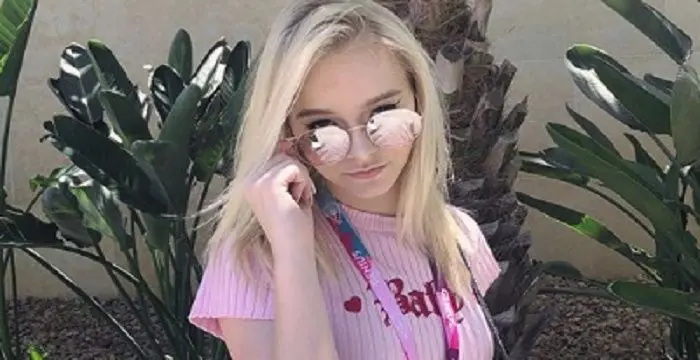
Dian Fossey - Conservationist, Life Achievements and Childhood
Dian Fossey's Personal Details
Dian Fossey was an American zoologist and conservationist
| Information | Detail |
|---|---|
| Birthday | January 16, 1932 |
| Died on | December 26, 1985 |
| Nationality | American |
| Famous | Scientists, Zoologists, Conservationist |
| City/State | California |
| Known as | Dian |
| Universities |
|
| Cause of death |
|
| Birth Place | San Francisco, California |
| Born Country | United States |
| Gender | Female |
| Father | George E. Fossey III |
| Mother | Kathryn Kitty Fossey |
| Sun Sign | Capricorn |
| Born in | San Francisco, California |
| Famous as | Zoologist, Conservationist |
| Died at Age | 53 |
// Famous Conservationist
Richard Leakey
Richard Leakey is a famous paleoanthropologist and wild life conservationist, known for leading the expeditionsin Ethiopia's ‘Omo River’ district. To know more about his childhood, career, profile and timeline read on
Dian Fossey's photo
Who is Dian Fossey?
Dian Fossey was an American zoologist and conservationist best recognized for undertaking an extensive study of mountain gorilla groups in their natural rainforest habitat in Rwanda. Counted amongst the foremost primatologists in the world, she, along with Birutė Galdikas and Jane Goodall formed the so-called “Trimates,” a set of three prominent researchers on primates. The trio was sent by paleoanthropologist Louis Leakey to study apes in their natural environments (Fossey focused on gorillas while Galdikas and Goodall on orangutans and chimpanzees respectively). Interested in animals from a very tender age, Fossey went through great emotional stress during her early days as a result of which she resorted to animals as a way to gain acceptance. Her parents divorced when she was six following which her mother remarried. Fossey’s stepfather Richard Price was a strict person who offered her little to no emotional support. He also failed to provide her the requisite finances for a college education and ultimately Fossey undertook odd jobs to fulfil her dream of becoming a zoologist. She graduated from University of California and initially worked as an occupational therapist before gaining fame as a primatologist and conservationist. In December 1985, she was brutally murdered in her cabin at a camp in Rwanda. It is believed that the great primatologist’s murder was linked to her conservation efforts.
// Famous Zoologists
Charles Darwin
Charles Darwin was one of the most influential figures in human history. Go through this biography to get details about his life, profile and timeline.
Konrad Lorenz
Konrad Lorenz was a Nobel Prize winning scientist from Austria who developed the branch of ethology. This biography provides detailed information regarding his childhood, career, profile and timeline
Karl von Frisch
Karl von Frisch was an Austrian ethologist who received a share of the Nobel Prize in Physiology or Medicine in 1973. This biography of Karl von Frisch provides detailed information about his childhood, life, achievements, works & timeline.
Childhood & Early Life
Dian Fossey was born on January 16, 1932 in San Francisco, California, the USA to Kathryn, a fashion model, and her husband, George E. Fossey III, an insurance agent.
When Dian was six, her parents divorced and her mother went on to marry businessman Richard Price. Fossey’s father tried to keep contact with the family but her mother discouraged it.
Her stepfather ill-treated her. He would not allow her to sit at the dining table for meals. Struggling with personal insecurities, Fossey turned to animals to gain some love and acceptance.
She started learning horse riding and by her graduation in 1954, she had established herself as an equestrienne.
Fossey attended Lowell High School and later enrolled in a business course at College of Marin as per her stepfather’s wishes.
At the age of 19, she joined University of California, Davis, where she enrolled in a pre-veterinary course in biology. She then studied occupational therapy from the San Jose State College, graduating from there in 1954.
Initially, Fossey started working as an occupational therapist, interning at various hospitals in California and working with tuberculosis patients.
In the year 1955, she took a job at Kosair Crippled Children's Hospital in Louisville. During her time there, she became close friends with Mary White Henry, secretary to the hospital's administrator and the spouse of one of the doctors, Michael J. Henry.
At one point, Fossey was invited by the Henrys to join them on their farm house. She agreed and began working there on a regular basis.
Eventually, she would graduate with a Doctor of Philosophy in zoology and obtain her PhD from the Cambridge University in the United Kingdom.
Touring in Africa
Dian Fossey was once asked to join the Henrys on an African tour. Although she turned down the offer at first due to lack of finances, later she borrowed $8,000 and took out her life savings to make this trip a reality.
Finally in September 1963, Fossey arrived in Nairobi, Kenya. There, she met safari guide John Alexander who helped her explore Kenya, Democratic Republic of Congo, Tanzania and Rhodesia. His route included the saline lake of Manyara; Tsavo, Africa's largest national park; and the Ngorongoro Crater.
While touring Africa, Fossey also got to visit the archaeological site of Louis and Mary Leakey, Olduvai Gorge in Tanzania. There she met the Leakeys and discussed with them the significance of long-term research on the great apes.
By October 1963, she was residing in the Travellers Rest, Walter Baumgartel's hotel in Uganda. Baumgartel, an advocate of gorilla conservation, introduced Fossey to wildlife photographers Alan and Joan Root. She was given the opportunity to camp behind the couple’s camp and ultimately got a chance to encounter wild mountain gorillas for the first time.
She then returned to Louisville to pay back her loans. After her trip, she published three articles for ‘The Courier-Journal’ newspaper, describing her visit to Africa.
Kabara: Beginnings (1966 to Early 1967)
In December 1966, Dian Fossey was on her way to Africa once again. With the help of Leakey and Joan Root, she acquired the necessary provisions and set off for Congo in a Land Rover purchased by Leakey, which she named “Lily”.
On her way, she visited the Gombe Stream Research Centre and met Jane Goodall and observed her research methods with chimpanzees.
She started her field study in Kabara in early 1967. She worked tirelessly every day until the day she was driven away from the camp during a political upheaval. On July 9, 1967, soldiers arrived at her camp to escort her and her research workers to a military base. Fossey eventually had to spend two weeks in Rumangabo under military guard.
She managed to escape somehow and went straight to the Travellers Rest Hotel, where Baumgärtel called the Ugandan military to get the soldiers arrested.
She finally flew back to Nairobi where she and Dr. Leakey decided that she would continue her job on the Rwandan side of the Virungas.
Foundation of Karisoke Research Center
On September 24, 1967, Dian Fossey established the Karisoke Research Center. This remote rainforest camp was nestled in the Ruhengeri province, saddled by two volcanoes. Established 3,000 metres up Mount Bisoke, this defined study area covered about 25 square kilometres. While working there, Fossey got the name Nyirmachabelli, or Nyiramacibiri by the locals.
In Rwanda, Fossey also met a woman named Rosamond Carr; the latter introduced the former to Alyette DeMunck, a Belgian woman. Fossey and DeMunck became good friends. DeMunck, who knew a lot about Rwanda, assisted Fossey in finding a good site for her new camp and helped her renew her study on the mountain gorillas of the Virungas.
Challenges Faced at Karisoke
Dian Fossey faced a lot of challenges while setting up her camp at Karisoke. Following the departure of DeMunck, she was left with no interpreter. However, slowly via hand gestures as well as facial expressions, she and her Rwandan men learned to communicate.
At Karisoke, Fossey continued to rely on American zoologist George Schaller’s previous works on mountain gorillas and the guidelines he had set forth. Through the processes, she was able to partially habituate four groups of gorillas in the year 1968.
Also in 1968, she met photographer Bob Campbell who was sent by the National Geographic Society to photograph her work. Campbell captured Fossey’s pictures with the mountain gorillas which eventually launched Fossey as a celebrity primatologist and helped change the negative image of the gorillas.
Protection of Gorillas against Poaching
While researching on Gorillas, Dian Fossey became aware of the threats the gorillas faced from cattle herders and poachers. Although gorillas were not usually their targets, the gorillas often became ensnared in the traps intended for other animals.
Fossey fought the poachers and cattle herders through methods such as wearing masks to scare poachers, spray-painting cattle, burning snares, and sometimes taking on poachers directly.
The American zoologist referred to her tactics as “active conservation” and believed that without immediate and significant action, other long-term conservation goals can’t be achieved.
She helped in the arrest of numerous poachers, many of whom served, or are still serving, long prison sentences.
In 1978, she even attempted to prevent the export of two gorillas, Pucker and Coco, from Rwanda to a zoo in Cologne, Germany. Despite her objections, the gorillas were transported to Cologne, where they lived for about nine years in captivity and died in the same month.
In the late 1970s, Fossey created the Digit Fund—named after a gorilla that was killed by poachers—for the purpose of financing her anti-poaching activities and preventing the rampant poaching of the mountain gorillas.
Fossey also helped purchase boots, food, and uniforms, and offered additional wages to encourage park keepers to be more active in enforcing anti-poaching laws. During the last two years of her life, she didn’t lose any gorilla to poachers.
Opposition to Tourism
Dian Fossey vehemently opposed wildlife tourism as she knew that gorillas are very susceptible to human anthroponotic diseases for which they have no immunity.
She reported numerous cases in which gorillas died as a result of diseases spread by tourists. Fossey also criticized tourist programs for interfering with both the peace of the gorillas' habitat and her research.
Currently, however, the Dian Fossey Gorilla Fund International encourages tourism, which they say helps to build a stable local community committed to protecting the gorillas and their habitat.
Personal Life, Death, & Legacy
While studying at Darwin College, Dian Fossey discovered that she was pregnant. She aborted the foetus.
During her African safari, Dian Fossey met Alexie Forrester, the brother of her ex-boyfriend in Louisville. She and Forrester later became engaged though they never married.
In her later years, she became involved with Bob Campbell who was already married at that time. Eventually, the duo parted ways.
She suffered from lung problems from an early age and later developed advanced emphysema due to her habit of heavy smoking.
On December 27, 1985, she was discovered murdered in the room of her cabin in Rwanda. She had been bludgeoned to death. According to the servant who first saw her body, “her face had been split, diagonally, with one machete blow." She was later buried at Karisoke.
In an unsigned will, she bequeathed all of her estate to the Digit Fund. Fossey did not leave anything to her family. Her mother eventually challenged the will and was ultimately successful in getting the estate, including $4.9 million in royalties from a book and an upcoming movie.
After her death, all her staff workers were arrested. This included Rwandan tracker Emmanuel Rwelekana who had been fired from his job after he allegedly attempted to kill Dian Fossey, according to the government's account of McGuire's trial. Rwelekana was jailed and he hanged himself later on. All of the other staff members were released.
Fossey's Digit Fund in the US was renamed as Dian Fossey Gorilla Fund International after her death. This organization currently runs the Karisoke Research Center.
// Famous Scientists
Juliane Koepcke
Juliane Koepcke is a German-Peruvian biologist, who was the lone survivor among the 92 passengers and crew of the ill-fated LANSA Flight 508 that crashed in the Peruvian rainforest on 24 December 1971. Know more about her life in this biography.
Henry Cavendish
Henry Cavendish was a theoretical chemist and physicist, renowned for discovery of hydrogen and calculation of the mass of earth. To know more about his childhood, profile, timeline and career read on
Konstantin Tsiolkovsky
Konstantin Tsiolkovsky was a Russian rocket scientist and a pioneer of astronautics. This biography provides detailed information about his childhood, family, personal life, career, achievements, etc.
Dian Fossey biography timelines
- // 16th Jan 1932Dian Fossey was born on January 16, 1932 in San Francisco, California, the USA to Kathryn, a fashion model, and her husband, George E. Fossey III, an insurance agent.
- // 1954She started learning horse riding and by her graduation in 1954, she had established herself as an equestrienne.
- // 1954At the age of 19, she joined University of California, Davis, where she enrolled in a pre-veterinary course in biology. She then studied occupational therapy from the San Jose State College, graduating from there in 1954.
- // 1955In the year 1955, she took a job at Kosair Crippled Children's Hospital in Louisville. During her time there, she became close friends with Mary White Henry, secretary to the hospital's administrator and the spouse of one of the doctors, Michael J. Henry.
- // Sep 1963Finally in September 1963, Fossey arrived in Nairobi, Kenya. There, she met safari guide John Alexander who helped her explore Kenya, Democratic Republic of Congo, Tanzania and Rhodesia. His route included the saline lake of Manyara; Tsavo, Africa's largest national park; and the Ngorongoro Crater.
- // Oct 1963By October 1963, she was residing in the Travellers Rest, Walter Baumgartel's hotel in Uganda. Baumgartel, an advocate of gorilla conservation, introduced Fossey to wildlife photographers Alan and Joan Root. She was given the opportunity to camp behind the couple’s camp and ultimately got a chance to encounter wild mountain gorillas for the first time.
- // Dec 1966In December 1966, Dian Fossey was on her way to Africa once again. With the help of Leakey and Joan Root, she acquired the necessary provisions and set off for Congo in a Land Rover purchased by Leakey, which she named “Lily”.
- // 9th Jul 1967She started her field study in Kabara in early 1967. She worked tirelessly every day until the day she was driven away from the camp during a political upheaval. On July 9, 1967, soldiers arrived at her camp to escort her and her research workers to a military base. Fossey eventually had to spend two weeks in Rumangabo under military guard.
- // 24th Sep 1967On September 24, 1967, Dian Fossey established the Karisoke Research Center. This remote rainforest camp was nestled in the Ruhengeri province, saddled by two volcanoes. Established 3,000 metres up Mount Bisoke, this defined study area covered about 25 square kilometres. While working there, Fossey got the name Nyirmachabelli, or Nyiramacibiri by the locals.
- // 1968At Karisoke, Fossey continued to rely on American zoologist George Schaller’s previous works on mountain gorillas and the guidelines he had set forth. Through the processes, she was able to partially habituate four groups of gorillas in the year 1968.
- // 1968Also in 1968, she met photographer Bob Campbell who was sent by the National Geographic Society to photograph her work. Campbell captured Fossey’s pictures with the mountain gorillas which eventually launched Fossey as a celebrity primatologist and helped change the negative image of the gorillas.
- // 1978In 1978, she even attempted to prevent the export of two gorillas, Pucker and Coco, from Rwanda to a zoo in Cologne, Germany. Despite her objections, the gorillas were transported to Cologne, where they lived for about nine years in captivity and died in the same month.
- // 27th Dec 1985On December 27, 1985, she was discovered murdered in the room of her cabin in Rwanda. She had been bludgeoned to death. According to the servant who first saw her body, “her face had been split, diagonally, with one machete blow." She was later buried at Karisoke.
// Famous American peoples
Wentworth Miller
Wentworth Miller is an American actor and screenwriter who achieved recognition for his role in the TV series ‘Prison Break’.
Jason Simpson
Jason Simpson is the son of former NFL running back, broadcaster and actor O. J. Simpson. Check out this biography to know about his childhood, family, life, and little known facts about him.
Melissa Brim
Melissa Brim is the ex-girlfriend of former professional boxer Floyd Mayweather Jr. Check out this biography to know about her birthday, childhood, family life, achievements and fun facts about her.
Skai Jackson
Skai Jackson is an American child actress with huge fan following. Find more about her family & personal life, relationships, facts and more.
Joyce Meyer
Joyce Meyer is a Christian author and speaker. This biography provides detailed information about her childhood, life, achievements, works & timeline
Zoe LaVerne
Zoe LaVerne is an American musical.ly star. Check out this biography to know more about her family, personal life, including her age, birthday, etc.
Dian Fossey's FAQ
What is Dian Fossey birthday?
Dian Fossey was born at 1932-01-16
When was Dian Fossey died?
Dian Fossey was died at 1985-12-26
Where was Dian Fossey died?
Dian Fossey was died in Volcanoes National Park, Rwanda
Which age was Dian Fossey died?
Dian Fossey was died at age 53
Where is Dian Fossey's birth place?
Dian Fossey was born in San Francisco, California
What is Dian Fossey nationalities?
Dian Fossey's nationalities is American
What was Dian Fossey universities?
Dian Fossey studied at Darwin College, Cambridge, San Jose State University, Lowell High School, University of Cambridge, UC Davis, College of Marin
What is Dian Fossey's cause of dead?
Dian Fossey dead because of Assassination
Who is Dian Fossey's father?
Dian Fossey's father is George E. Fossey III
Who is Dian Fossey's mother?
Dian Fossey's mother is Kathryn Kitty Fossey
What is Dian Fossey's sun sign?
Dian Fossey is Capricorn
How famous is Dian Fossey?
Dian Fossey is famouse as Zoologist, Conservationist
